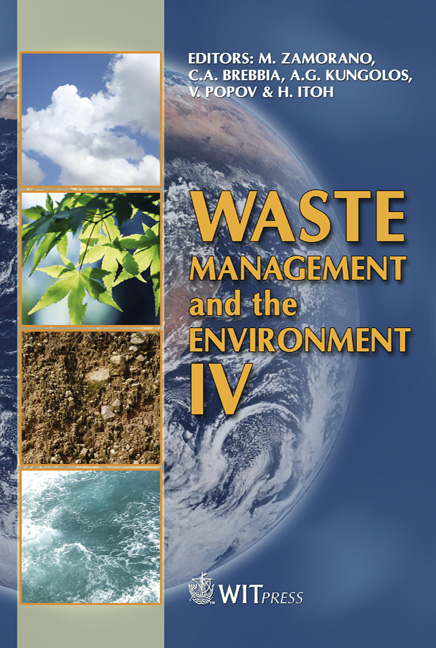Kinetic And Modeling Of Radiolytic Decomposition Of Antibiotics
Price
Free (open access)
Transaction
Volume
109
Pages
9
Page Range
39 - 47
Published
2008
Size
445 kb
Paper DOI
10.2495/WM080051
Copyright
WIT Press
Author(s)
S. Yu, D. Choi & M. Lee
Abstract
There has been recent growing interest in the presence of antibiotics in different environmental compartments. One considerable concern is the potential development of antibiotic-resistant bacteria in the environment, even at low concentrations. Kinetic experiments were conducted to compare two kinetic models for radiolytic decomposition of various antibiotics such as cephradine, amoxicillin, sulfamethazine, tetracycline, and lincomycin. Batch kinetic experiments with initial aqueous concentrations of 2, 6, 8, 20 mg/L showed the decomposition of antibiotics using gamma radiation followed a pseudo first-order reaction, and the dose constant increased with lower initial concentrations. For comparison of a kinetic model for radiolytic decomposition of various antibiotics, the Monod equation was used. The kinetic parameters of maximum reaction rates (kmax) and half-velocity coefficient (Ks) are obtained. The kmax values ranged from 0.29 to 0.99 µM/Gy. The Ks values for antibiotics decreased in the order of: cephradine > lincomycin > amoxicillin > sulfamethazine > tetracycline. Radiolytic decomposition of antibiotics by gamma radiation was well described by both a pseudo first-order reaction and the Monod equation. Keywords: radiation, antibiotics, kinetics, modeling. 1 Introduction Reports in the literature show that pharmaceuticals used in human and animal husbandry are present in soil, sediment, surface water, and groundwater. As important pharmaceuticals in today’s medicine, antibiotics are used mainly to prevent and treat human and animal diseases, as well as for growth promoters in
Keywords
radiation, antibiotics, kinetics, modeling.





